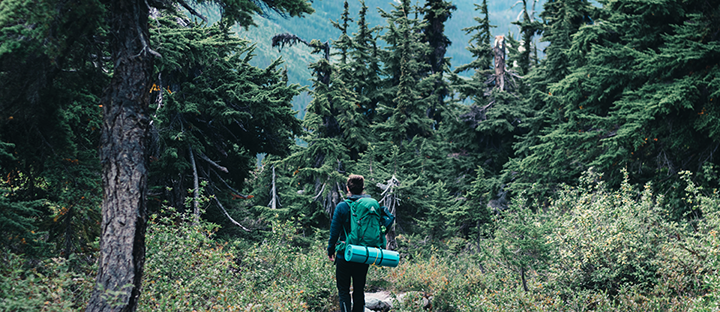From mapping to data, these Y2Y conservation science interns have brought heaps of knowledge to our collaborative recreation ecology project
Recreation is a crucial part of the lives, well-being, economies and sense of place for people who live in and care about the mountains and foothills.
There is a growing number of people exploring and recreating in the Yellowstone to Yukon region. In fact, many provinces and states have seen record-breaking visitor numbers over the past few years in the front- and back-country, on public lands and in parks.
This has been especially true during the COVID-19 pandemic. For many of us, getting outdoors is how we have been able to safely see our friends and family and recharge our batteries. Even during pre-pandemic days, nature has always been there for us.
Ensuring that people thrive alongside nature is core to Y2Y’s mission and vision. The question is: how can we do better to protect the places we love, and the wildlife we share space with?
THE NEED
Research shows that with more people recreating in more places, more often, and going farther and faster using motorized and non-motorized means, we risk adding pressure to wild places and wildlife, and sometimes each other.
Recreation is also chronically understudied, especially across boundaries and at the broad spatial scales needed for “large landscape” conservation.
With that, scientists, governments, First Nations, adventure tourism businesses, recreationists, and conservationists in southeastern British Columbia and western Alberta have identified concerns about the places that they work, live, and play in — including a need for better management and planning for recreation.
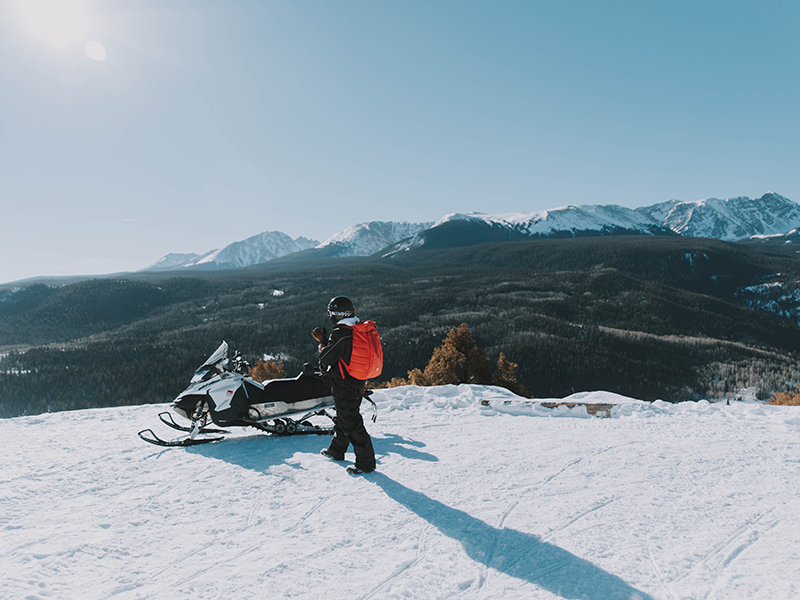
THE IMPACT
Y2Y researchers collaborate with the University of Northern British Columbia (UNBC) and other partners on a multi-year applied research project that aims to understand when, where and how people are recreating in British Columbia’s Upper Columbia and Alberta’s Kananaskis-Ghost regions.
Ensuring that people thrive alongside nature is core to Y2Y’s mission and vision. The question is: how can we do better to protect the places we love, and the wildlife we share space with?
This research was initiated after multiple conversations with people from government agencies, conservation and recreation groups, and community members. Ultimately, the data will help inform interested groups to ensure high-quality recreation experiences (both in planning and management), reduce human-conflict, and that wildlife can thrive across the large landscapes that they need.
THE INTERN TEAM
Studying recreation at this scale is a big undertaking! Luckily, we have had help. Y2Y and UNBC have worked with multiple interns on the recreation ecology project in 2020 and into 2021.
Home-based and remote research presents its challenges, let alone getting to know a new team…virtually. Despite this, our recreation ecology interns dove straight in to their projects without hesitation and have already brought an abundance of knowledge to this research.
Now, let’s learn a bit more about them: meet Talia, Gabe and Naia!
Talia Vilalta
Master’s of Science in Environmental Management
Based in Olds, Alberta
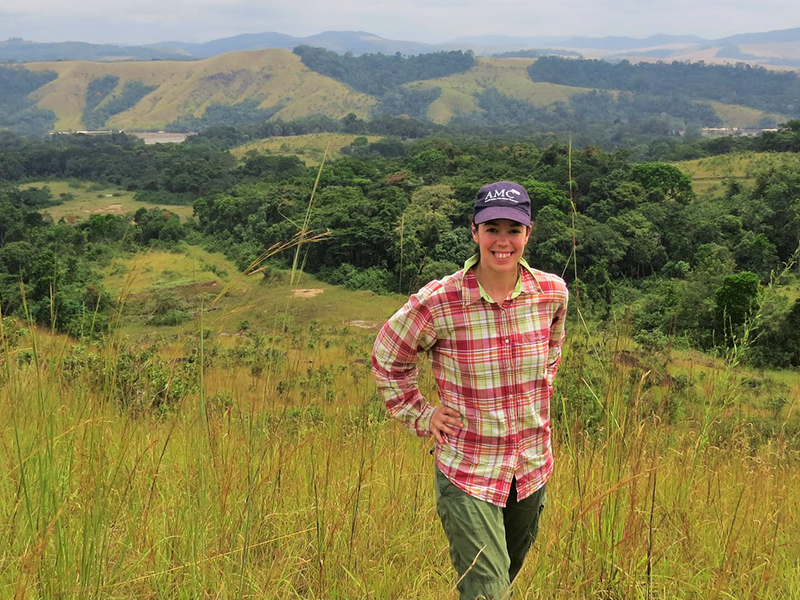
What aspect of the recreation ecology project are you working on?
“I’ve been working to obtain and organize data. This has been a varied endeavor, ranging from combining and collating geospatial data, searching for trail information, virtually meeting recreation experts/enthusiasts, and working with statistical and mapping programs to manage and process everything.
I have also been attending workshops and organizing scientific literature using reference management software. We’re starting to use these data to create human and wildlife models to better understand where and why both go where they do, and look for overlap such as potential conflicts. I am very excited to put all these datasets to use.”
We are pleased to announce that Talia joined Y2Y staff in May 2021 for the next year as a conservation science technician.
What’s something interesting you have learned along the way?
“One of the coolest things has been discovering how passionate many people are — not just about recreating outdoors, but also in caring deeply about nature and the wildlife with whom they share space.
It has also been surprisingly challenging to know how many people go where over time, especially at broad scales! Better information about recreation has several benefits: it can help reduce conflicts between different types of users, be an invaluable tool in creating management plans that sustain or improve the recreationists’ experience and help people and wildlife coexist by knowing if, where and when recreation overlaps with animals.”
What are your top tips for recreating responsibly with wildlife and nature in mind?
- “If you know there is an animal in an area/trail, do your best to move to a different area or trail.
- If you encounter wildlife, do your best to avoid it and not disturb it.
- Leave No Trace — everything that you brought should go back home with you, and don’t take anything you didn’t bring.”
What’s one of your most memorable experiences out in nature?
“One of my most memorable experiences was doing field work out in Kananaskis from 2013 to 2014. I was collecting data on bighorn sheep behavior, perched on a hillside looking across the valley through a spotting scope to watch sheep interact with each other.
By sitting quietly for hours on end, I was able to observe many other animals going about their daily lives: chipmunks, grouse, deer, coyotes, and even a cougar. Witnessing some of their tenderest moments — baby ground squirrels wrestling playfully after coming outside of their burrow for the first time, or bighorn sheep lounging and falling asleep close enough for me to hear them snoring softly — nurtured a great sense of appreciation for the nature and wildlife that we are so very fortunate to share the outdoors with. This solidified my resolve to contribute to nature conservation in any way possible.”
Gabe Schepens
Master’s of Science student in Environmental Studies
Based in Victoria, B.C.
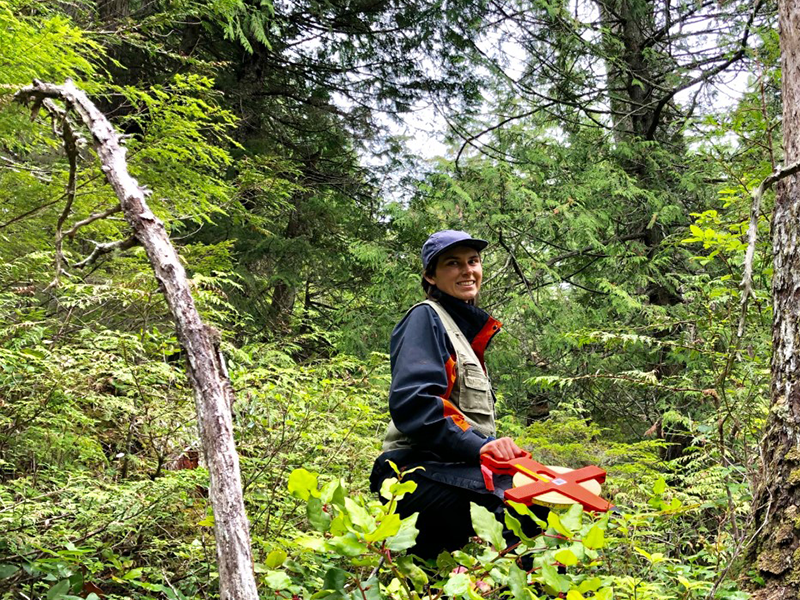
What has your involvement in the recreation ecology project looked like?
“I’m working on mapping wildlife habitat across the study area. Large mammals, like wolverine and grizzly bear, need a lot of space but are losing it as human activity and development grows. In order to protect these at-risk species, we need to understand where they live.
For this project, I’m combining all available research into one habitat quality map, which allows us to identify important areas for these species. Now we’ll be able to tell, for instance, when a snowmobile area overlaps with prime denning slopes — giving managers the ability to plan seasonal protections.”
Tell us something interesting you have learned while working on mapping wildlife habitat!
“As a plant ecologist, I have learned a lot about mammals. My supervisor told me that ‘animals are just plants that move’, which I have since found to be a massive oversimplification. One incredible thing about mapping animal habitat is seeing how their use of the landscape changes throughout the year — grizzlies need a secluded place to den and care for their newborn cubs, but come down to the meadows for berries later in summer. And, teenage bears use different habitats to avoid fights with territorial adults! Knowing how habitat preferences change across ages and seasons helps conservation managers protect animals throughout all stages of their life.”
Can you share your top tips for recreating responsibly with wildlife in mind?
“Whether you’re hiking, biking, snowmobiling, or skiing, the most important thing is to give wildlife space. When I’m out and about, I make noise so that animals can hear me coming and have time to react long before I see them or they see me. But, running away from humans can be stressful. It’s important we check for area closures, which can happen when conservation managers need to give wildlife a rest. Often, closures are only seasonal and happen when the animals are most vulnerable.”
Naia Noyes-West
BA Environmental Policy with Economics
Based in chuwap chîmchiyân kude bi (Canmore), Alberta
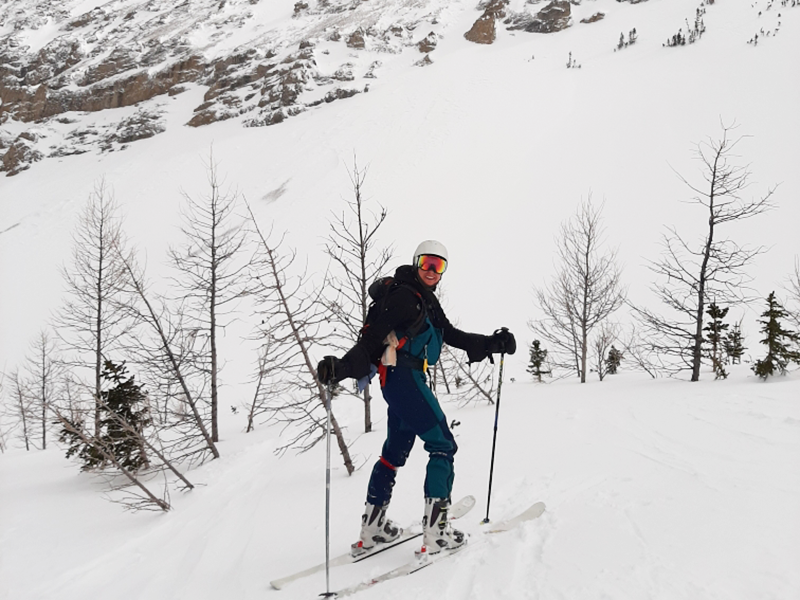
What aspect of the recreation ecology project did you work on?
“I helped schedule and conduct participatory mapping discussions, in which backcountry users shared their experience and knowledge about recreation patterns in the Upper Columbia and Kananaskis-Ghost. I then digitized and added that information to our maps. I also help gather data on trail use from outdoor recreation and fitness applications. This is a long process, but I love looking at and playing with maps! Next, I will help digitize winter ski run maps and research and add cabin, campground, and parks data to our map.”
What’s something surprising you learned during this internship?
“There is a place in Kananaskis called the “Forest of Profanity.” Sometimes, when the databases we use are being finicky and decide to crash or get stuck, I teleport to this place.”
What are your top tips for recreating responsibly with nature in mind?
“Know whose land you’re on. Even if you only know the name of one of the Indigenous communities in whose territory you live, work, or play, having that name in your mind will help you be conscious of yourself and how you act in nature. There are so many resources, from podcasts and books to community classes and websites. When in doubt: look it up! My favorite resources are: native-land.ca, Media Indigena Podcast, Calgary Public Library online courses, and the Stoney Nakoda Language and Culture classes with Buddy Wesley and ArtsPlace!”
What’s one of your most memorable experiences out in nature?
“My most memorable trips in nature are just my daily walks through small local natural areas — like the path to the grocery store, or the meandering trails behind my house. These are so important to me and my mental health, and help me remember that life is knowing you are in community with the diverse species around you, just by witnessing their changes through the seasons.
Getting into the backcountry is great but, if possible, I try to satisfy my nature fix and reduce negative impacts (like greenhouse gas emissions) by walking everywhere. And as an additional bonus, time spent in nature helps us to feel great!”
THE RESEARCHERS & SUPPORTERS
Drs. Aerin Jacob, Y2Y conservation scientist; Pamela Wright, Y2Y board member, UNBC researcher and professor; and Karine Pigeon, former Y2Y-UNBC postdoctoral fellow are all part of this multi-year project, along with partners including BC Parks, Recreation Sites and Trails BC, Alberta Environment, Alberta Parks and Parks Canada.
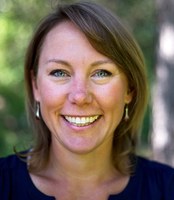

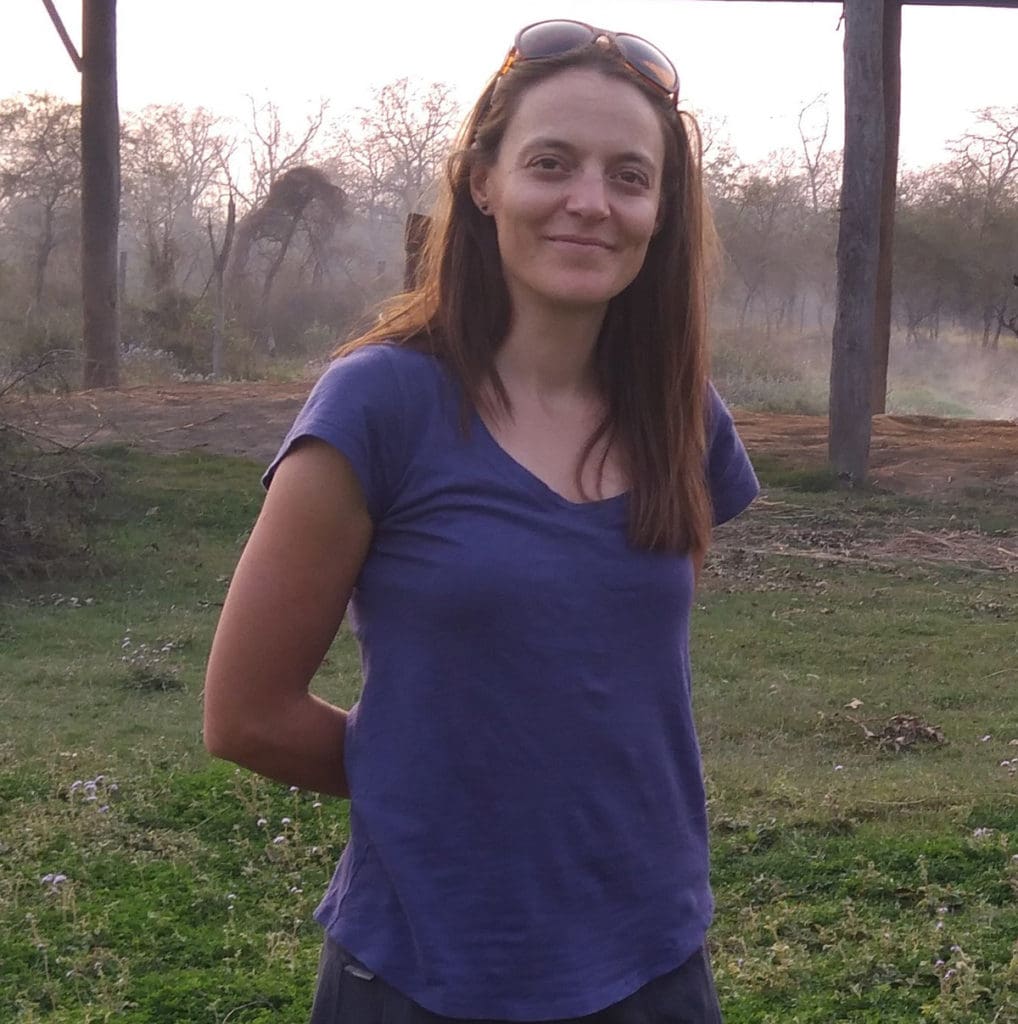
This research is also made possible by the following funders: Canada Summer Jobs, Eco Canada, Habitat Conservation Trust Foundation, Mitacs, RBC Foundation, The Volgenau Foundation, Wilburforce Foundation.
P.S. This project was led by Dr. Karine Pigeon from November 2019 to April 2021. We’re grateful for the knowledge and passion she brought to the project.
Where’s the research at now, you ask?
We caught up with Dr. Pam Wright to learn about the next steps in this ground-breaking research.
“After a year and a half of hard work focusing on tracking down elusive bits of visitor use data, manipulating finicky computer programs, and assembling data layers we are now at the exciting stage of the project,” says Wright, who received a national award in 2020 for outstanding achievements in applied research and mentorship relevant to conservation.
“Over the next six months, we will pull all the pieces together to identify where human and wildlife use are getting too close for comfort. This information can help users and land managers identify strategies to enable us to recreate in wildlife-safe ways in the backcountry.”
Additional reading:
- October 2019: New post-doc brings passion for people and nature
- July 2020: Funding to help drive much-needed research into recreation in B.C., Alberta
- September 2020: Getting to know Y2Y’s summer 2020 interns
- November 2020 guest post: Bringing together science and conservation action to help people and wildlife coexist
